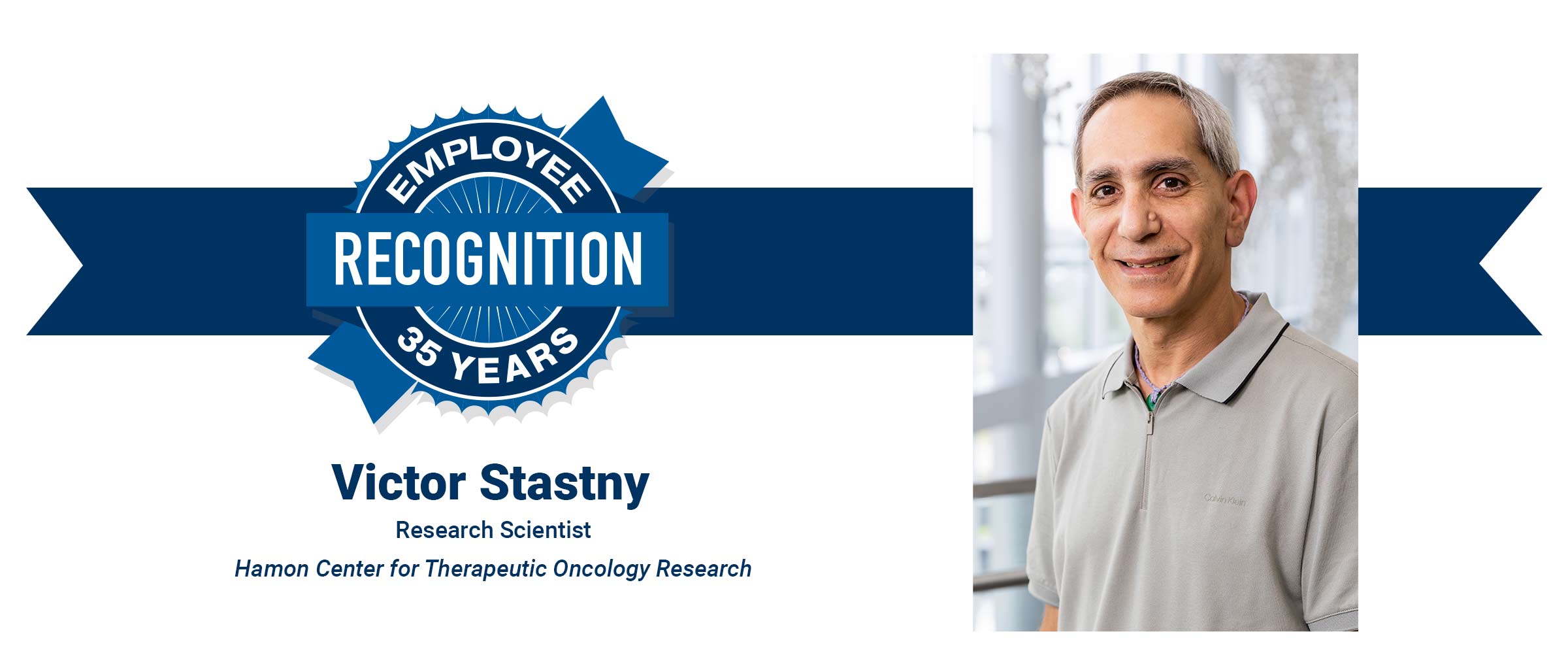Evolution from teenage lab assistant to research scientist

Victor Stastny might be one of the youngest UT Southwestern hires in history. As a teenager, he began working in 1976 in the lab of the late J. Donald Capra, M.D., an international leader in immunology.
“Being a member of Dr. Capra’s lab during my high school summers and working under several of Don’s graduate students opened my eyes to the beauty of science,” he says.
With a background in primary tissue and cell culture, he is now a molecular biology bench scientist in the laboratory of John Minna, M.D., in the Nancy B. and Jake L. Hamon Center for Therapeutic Oncology Research.
Mr. Stastny considers his greatest claim to fame as an ability to derive cell lines for the Center. He’s aided in the vitally important work of some of the world’s top cancer researchers. For instance, he honed his cell culturing skills in the lab of the late Adi Gazdar, M.D., who with his longtime research partner Dr. Minna developed hundreds of cell lines credited with advancing cancer research around the world.
Mr. Stastny attributes his 35-year UTSW longevity to his relationships with great co-workers, the University’s atmosphere of innovation and creativity, and the pursuit and fulfillment of research goals that serve science and medicine.
In his spare time, the native Dallasite enjoys mountain biking, windsurfing, snowboarding, and growing vegetables. He says colleagues might be surprised to learn, however, that he worked for a year at the Sinica Institute – an academic institution in Taiwan.
What he enjoys most about his work is solving problems, he says, attributing much of his success to his curiosity.
Energizing him on the job is “the ability and potential to contribute meaningful science,” Mr. Stasny says.
Where does he see the University going in the next 35 years? “I envision UT Southwestern strengthening its position as the premier academic medical center in the Southwest and continuing its tradition of attracting and fostering creative, talented people,” Mr. Stastny predicts.

